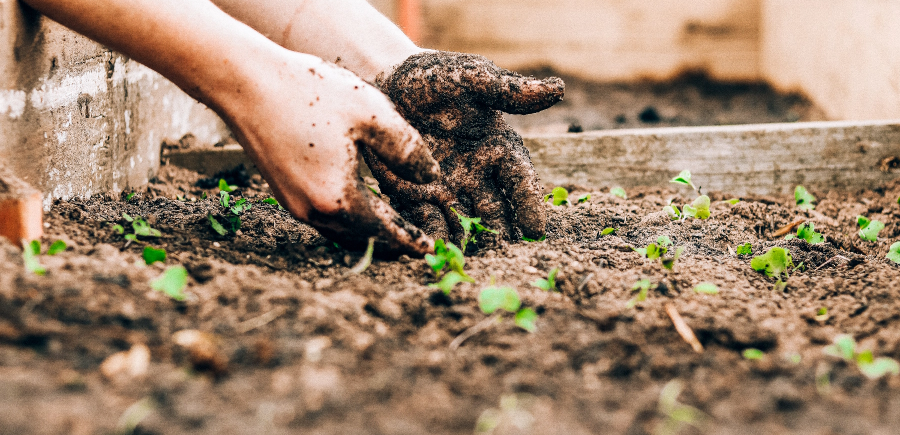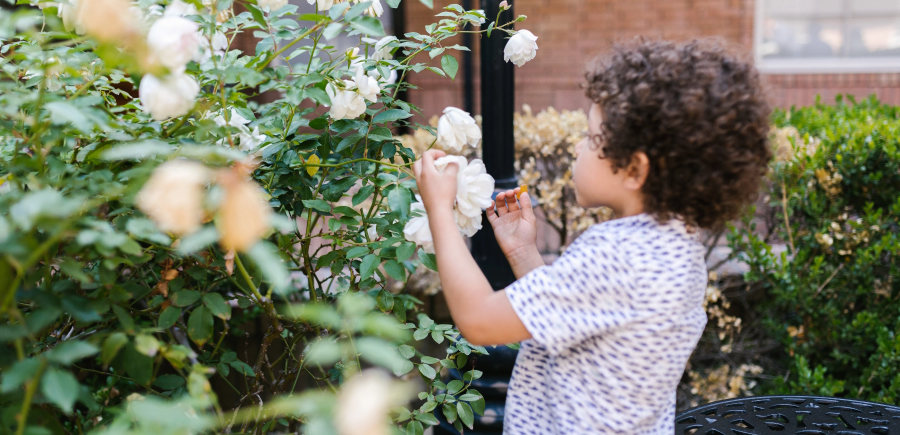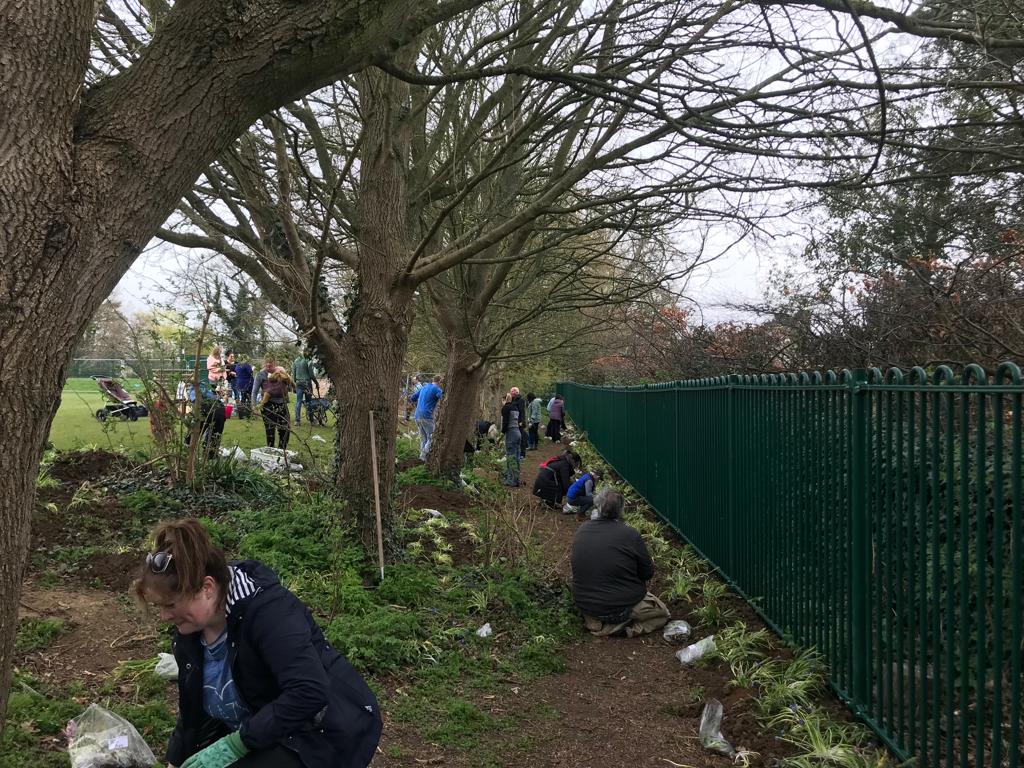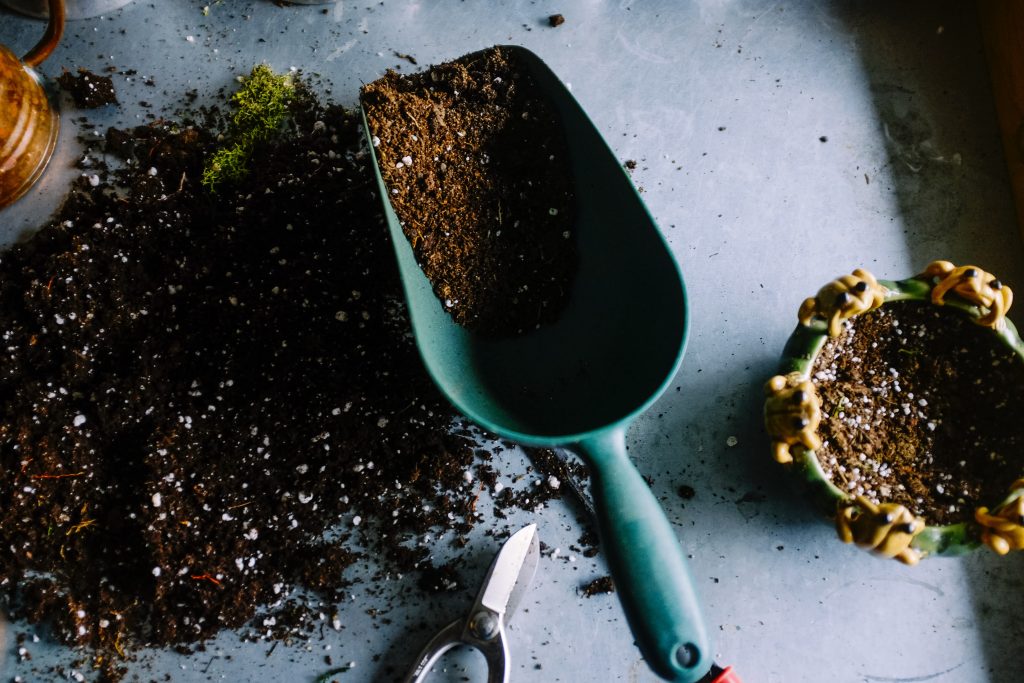
Children come to life in nature, and there are well known benefits to spending time outside and learning in the outside world. They deserve the chance to feel connected to the natural world they live in, to be able to recognise the trees, plants and animals, and to reap the benefits in terms of greater resilience, problem solving and wellbeing that come from time spent in nature.

Why this matters?
Reports and reviews from nearly 300 studies found a strong connection between exposure to green spaces and mental health benefits in children. Studies emphasise the importance of ‘meaningful nature exposure’, with not all outdoor spaces and child-focussed play areas being equal. A field, or an ‘urban playground without natural elements is not a garden’ (Paediatrics 2022). Mental Health Foundation which says ‘“High quality” natural spaces are better for us and our wellbeing.’ Children aren’t playing outside as much as previous generations, spending 17 hours each week watching television and 20 hours online2 . A report by the National Trust states the area around the home in which children are allowed to play, has declined by almost 90% since the 1970s; driven by parental fears over safety.. Being stuck indoors may be disconnecting children from the natural world. In a 2008 survey one third of children could not identify a magpie, meanwhile half could not tell a bee from a wasp2 . Currently just 23% of boys and 20% of girls meet the national recommended level of physical activity3 . This inactivity is matched with a low fruit and vegetable intake, averaging just 3.1 servings per day for children in England. At the same time,, childrens mental health services are seeing higher and higher rates of referral and children’s wellbeing continues to suffer.
Our work matters because we want to support children to learn in a way that has made sense to them for hundreds of years, because we want them to remain connected to nature and the world around them, and because we know that connectedness to nature has a direct impact on their resilience, wellbeing and mental health.

.
“Once upon a time, words began to vanish from the language of children. They disappeared so quietly that at first almost no one noticed – fading away like water on stone.”
~ Robert Macfarlane (The Lost Words) on how words like Bluebell, Acorn and Kingfisher had fallen out of children’s vocabulary

Projects
4 Local | 1 National

Woodland learning environment
Children accessing forest school sessions in a community-accessed area of trees were struggling with the lack of diversity and planting. As a result, the sessions didn’t give them an opportunity to learn very much about the world and plants around them, or to engage meaningfully with a lot of the forest-school activities.
Working with TV and Chelsea Flower Show award-winning garden designer and author, Adam Frost, Benedict Blythe Foundation designed and funded the creation of a diverse woodland learning area that included planting for insects, educational signs, bug hotels, a range of trees and planting, and exploratory pathways.
The resulting design meant not only an improvement to the learning environment and experience for children, but also improvements to birds and wildlife and to the local community who used the space for walking and reflection.

Natural Resource Library
Funding of art equipment for all pupils in the school, with each of the 170 pupils receiving their own sketch book and materials including coloured pencils, oil pastels, watercolour, paelttes, paint rollers, charcoal, craft materials and clay. These will be used from September 2022 onwards so children benefit from using the sketch book during the full school year.

Bulb and nature walk
Over 50 volunteers contributed to plant in excess of 30,000 bulbs to regenerate a nature walk for schoolchildren in Cambridgeshire. The woodland bulb walk provides a reflective space for children, but also helps to build the diversity of the area they learn in, and their opportunity to learn about native woodland flowers and plants.

Gardening kits
Funding of art equipment for all pupils in the school, with each of the 170 pupils receiving their own sketch book and materials including coloured pencils, oil pastels, watercolour, paelttes, paint rollers, charcoal, craft materials and clay. These will be used from September 2022 onwards so children benefit from using the sketch book during the full school year.
Resources
Brooke Bond
Brooke Bond Tea Cards
About 50 different collections of cards, with many nature cards
Stop Ecocide International
Art for Ecocide Law
Collection of artists and work related to ecocide, downloadable fish graffiti template
Common Sense Media
Environmental Websites for Kids
15 or so websites revieweed for child safety and searchable by age
American Horticultural Society
Educator Resources
Links to, and descriptions of, various educational websites
Kew Gardens
Primary Education Resources
Pre- and post-visit resources: can work as stand-alone activities
Royal Society of Biology
Primary Resources
About 12 links to teaching and learning resources, including Journal for Biological Education
BBC Discover Wildlife
60+ wildlife and nature books
List of books with short descriptions - kids and teens
Dr Seuss
The Lorax
Book / movie about a creature in a land where they cut down all the trees.
Maria Isabel Sanchez Vegara
David Attenborough (Little Peope, Big Dreams)
Video trailer about kids' biography of David Attenborough
Royal Institution Christmas Lectures
Growing Up in the Universe
Richard Dawkins (5 lectures)
Royal Institution Christmas Lectures
The languages of animals – Beware!
David Attenborough (1973)
Royal Institution Christmas Lectures
Who am I? Where do I come from?
Alice Roberts and Aoife McLysaght (2018)
STEM Learning
The Natural World
Various primary resources, .e.g, medicines for pets; farming
Convention on Biological Diversity
Life Lessons – Bringing Biodiversity into the Classroom
Teaching and learning resources about biodiversity
Woodland Trust
Resources and activities for schools
Content, apps and other tools about nature
Modern Teaching Blog
How to incorporate natural resources in the classroom
10 natural resource-based classroom activities
RSPB
Fun & Learning
Resource / instruction sheets for dozens of activities - for teachers, kids, families
National Trust
Various
Most locations have cross-curricular primary education resources
London Zoo
Learning resources / Zoo Discovery
Lots of sheets, activities and magazines for different Key Stages
Natural History Museum
Learning resources by Key Stage
Lots of sheets, activities and magazines for different Key Stages

